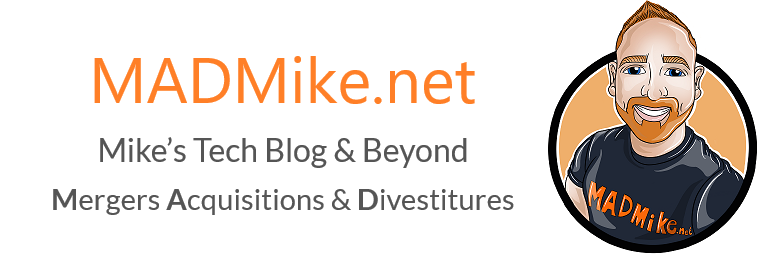Moving to a new system has never been easy. In the last few years our technology and organizations have changed. This has fostered new collaboration, both in our tech, and how we operate as companies. As a Migration Technologist, this has created a big problem; Staged Migrations just don’t seem like an option anymore. In this post I am going to review why we keep pushing into bigger and bigger “Big Bang” cutovers. When we add in the added pressure of MAD, this can force us into project decisions quickly.
In this post I will review the migration options. You will see that I will argue that most firms are moving to a point where a “Big Bang” cutover is the reality. I have found that when done correctly, even in Enterprise Migrations projects, this a safer approach for most modern companies.
For those of us who like to mitigate risk in our projects, this is a painful realization and discussion. For those running into it for the first time, if can be a baffling discussion to have. I think this comment from a recent exchange says it all:
“You want me to go to my management and argue we should cutover all the users at once, and all of us take the risk of losing our jobs if this goes wrong?”
In summary, here is my answer: Yes, because you can mitigate the major risks and produce a high-quality outcome at a lower cost, and lower disruption to the business.
So . . . …grab your weighted blanket, and let’s review the issues with migrations and the modern hybrid organizational structures.
Modern Organizational Behaviour
For companies that are “all in” with Office 365, they are enjoying a product designed for collaboration. Users are able to collaborate in many different manners both inside and outside of the organization. Today’s organizations don’t operate in department boundaries. When any project kicks off, a team of experts from around the company are put together. I use the term project loosely. This can be an account team, product launch, or really any business activity. It seems that rarely does something get assigned to one department anymore, and these are not always point-in-time projects. Often these are initiatives that last indefinitely. When a project kicks off, someone will create a Teams Site, share OneDrive documents, calendars, and so on. Each member is on several different projects, with several different teams. Modern org structures look a lot like a wiring closet from the dotcom boom:

Untangling this mess isn’t easy. Like anyone who has inherited an awful wiring closet like this, sometimes you just have to shut down for a weekend and fix it, rather than doing it step by step. However, sometimes we can tackle this cage-by-cage or port-by-port. Let’s look at the options for migration projects and the current state.
The Extreme Big Bang – All users cutover at once
Common Characteristics:
- Hybrid org structure
- Extreme cross department collaboration
- Have been using Office 365 for quite some time with several features and options
- The plan: One large cutover on a long weekend
Pros:
- The time previously used to plan and breakdown users, can be used to find issues in the migration
- Pick the right weekend and get everyone engaged and moving together
- Prepare for a few days of struggle, instead of months of drawn out struggle
- Overall project cost may be lower, and impacts can be less if the dates are picked correctly
Cons:
- If it goes wrong, it all goes wrong
- You need to pick a migration technology that can move this amount of users
- Helpdesk support is going to be difficult
- You need extreme focus and buy in on the migration window
- Requires the most senior buy in
The Classic Staged – Stay the course and migrate users in group
Common Characteristics:
- Traditional organizational structure
- Companies with on-prem systems or new to Office 365 and may not be using all features
- Multiple SMTP domains are in use
- The plan: migrate in small chunks for weeks
Pros:
- When something goes wrong, a smaller number of users are impacted
- This is a more comfortable approach for many, as it is familiar
- Can deal with issues as they pop up
Cons:
- The planning process can be a huge burden
- Long running project team required
- High focus needed for repeatable processes for a long period of time
The Data Driven Hybrid
Common Characteristics:
- Good for companies that have large operational divisions and divisions with hybrid structures
- Companies where large divisions operate in a structured system instead of an unstructured system like Office 365
- The plan: migrate some areas in large chunks and others staged
Pros:
- Can be the best of both worlds for the right company
- Minimize disruption for both “sides” of the business
- Breaks the project down into a few large chunk instead of a Big Bang or months of disruption
Cons:
- The planning can overtake the risk mitigation
- If the company is highly collaborative, this plan may not be possible
Summary
In future posts, I will dive into the technology behind these decisions and ways to mitigate risk in all of the above scenarios. Certain limits in Office 365 Tenant-To-Tenant migrations force some of these situations. Like any solution, each project is different. However, I can attest that with the explosion of Office 365, and its ease of collaboration, more and more companies are moving into the Big Bang approach.
This is a topic I am spending a lot of time on lately. If this is a topic you are struggling with, get in touch!
